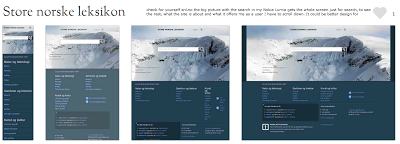The Myth of HTML5 and How It's Misunderstood
HTML5 MISCONCEPTION
Nowadays any new browser capability or web application technique found across the web is labeled as HTML5 and that is not true. Michael Mahemoff said that HTML5 has become a brand that represents a new type of web application rather than the specification itself.
In order to learn HTML5 is very important to understand what really HTML5 is. It is common nowadays hear CSS transitions, web sockets, geolocation, SVG, CSS @font-face all mentioned under the HTML5 banner and label all under HTML5 "brand". In the specification none of those mentioned are found for the simple reason that they either belong to the CSS3 specification or other API specification within the WWW Consortium.
Websites are and will be built with a combination of HTML5, next-generation APIs, JavaScript and CSS3, which means that as a designer or developer the difference between those technologies must be clear and how they fit together should be understood.
What is really HTML5?
HTML5 is a continuation of previous HTML specification in the DOM Level 2, designed to address how modern web applications are created.Why do we need HTML5?
HTML5 is not attempting to reinvent the wheel, however as the specification is huge (almost twice as much the one for HTML4), it's focused on creating a consisting browsing experience what turns it into more of an actual application platform.One of the main reasons that HTML5 was favored over XHTML 2 was the fact that it remains backwards compatible with previous versions of HTML. This meanst the user agent is written to support HTML5 also supports documents written in earlier versions of HTML. Think for a minute - there are millions of HTML documents online that would not work if backwards compatibility was not addressed.
Theoretically HTML5 was designed to allow designers and developers to write HTML without worrying about the differences between user agents or even devices. However the truth is, whether HTML5 works or not is largely up to how the specification will be adopted by the user agent that choose to support it.
New semantic tags such as section and <article> tags give pages additional structure and meaning that are especially helpful for blogs and other applications.
At first glance, items like APIs, local storage, and support for video and audio seem overwhelming when introduced into an HTML specification. However this simply reflects the needs of modern web design because over the past decade web sites have become increasingly dependent on JavaScript and third-party plug-ins for much of the web’s functionality.
In Summary what HTML5 specification does is attempt to address the deficiencies of HTML4 and mature the language into a more capable mobile and web authoring tool.
Benefits of HTML5
- Retain backwards compatibility with previous versions of HTML.
- HTML5 contains many features to facilitate the development of applications, because it focuses heavily on application development. It includes form controls, application-specific attributes, and adds support for multiple APIs. These capabilities make it easier for designers and developers to build web and mobile applications, serve video and audio, and create interactive content.
- Unlike previous versions of HTML, in HTML5 the specification contains explicit rules on how content should be parsed and how errors should be handled. This degree of detail is designed to enhance interoperability across systems.
In order to take advantage of HTML5’s new features while in implementations stage we must provide backwards-compatible alternatives.

Comments
Post a Comment